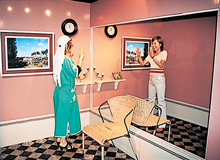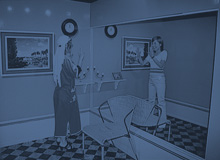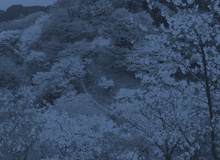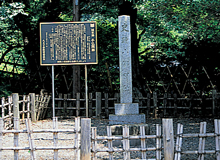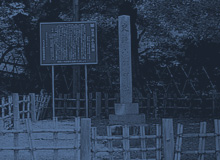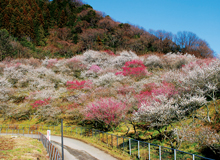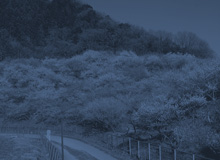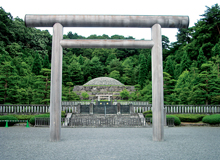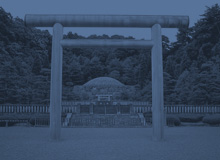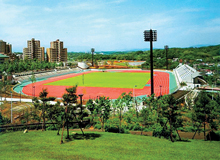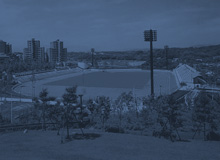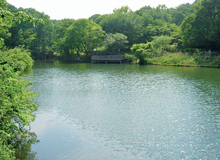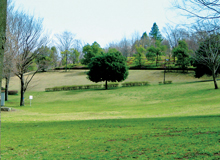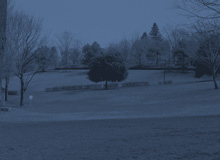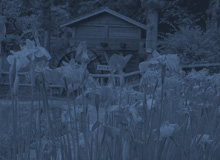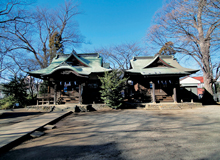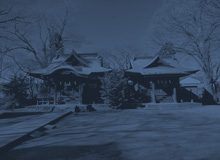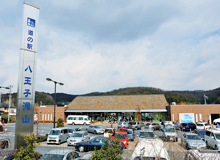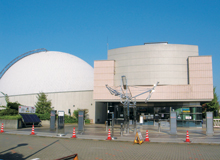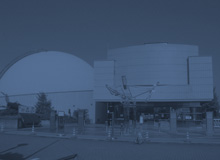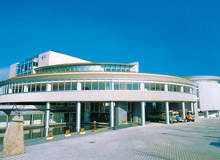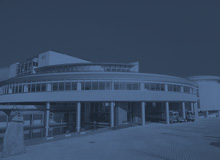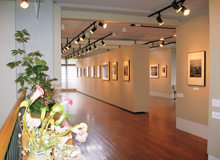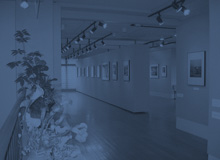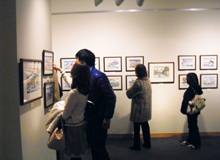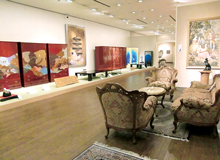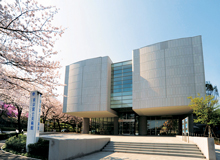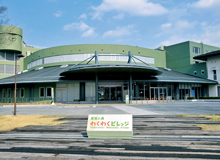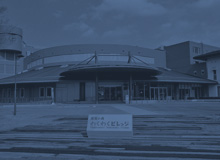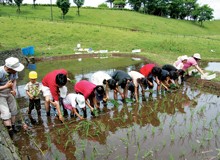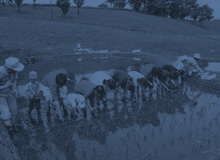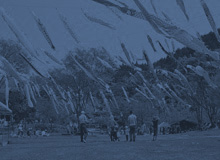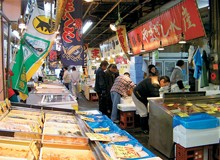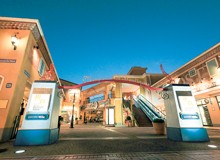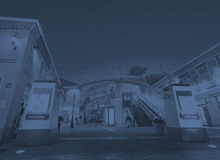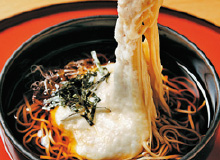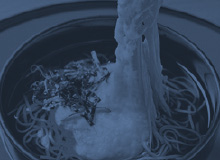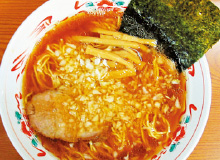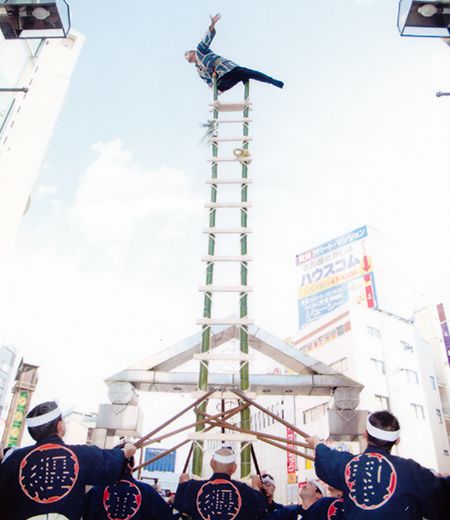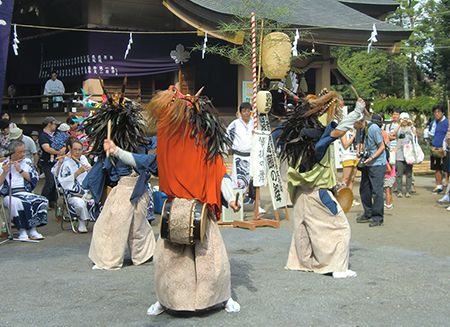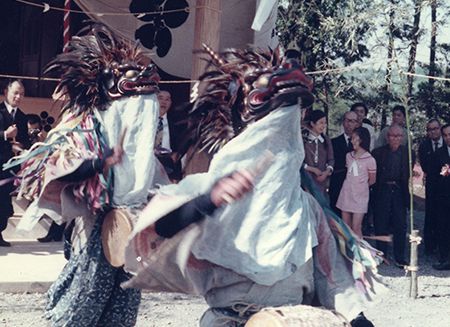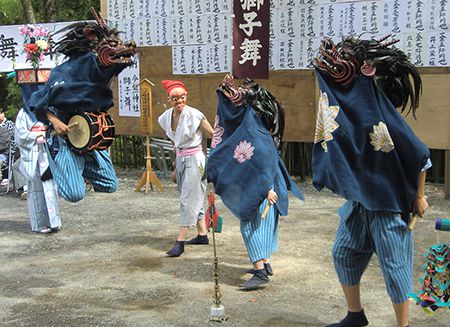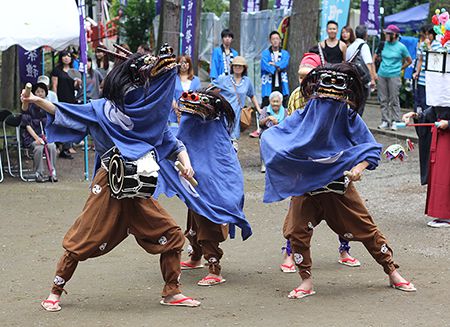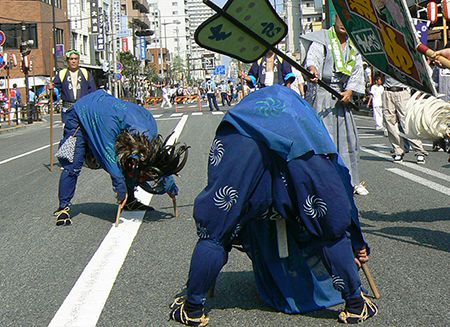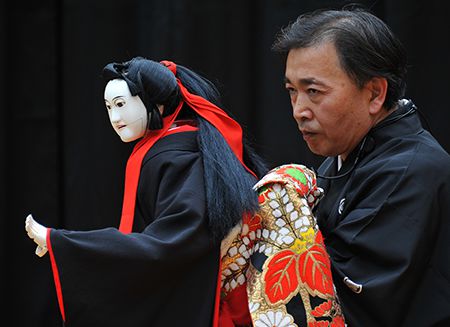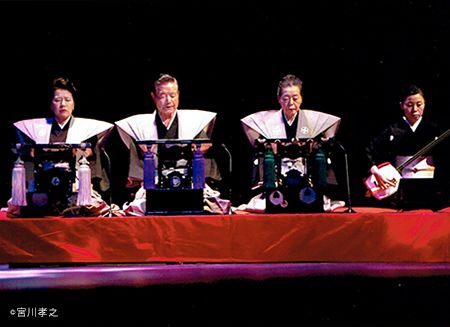“Hachioji” the town of Mt. Takao
The city of Hachioji, the basetown of Mt. Takao still have various historical sites in the city including Takiyama castle and Hachioji castle and many events including the largest festival in Tama area called “Hachioji Matsuri Festival” are held throughout the year. Attractions of Hachioji to everyone. There are recommended places to visit, seasonal events and historical and cultural sites.
See
-
Takao-komagino-teien
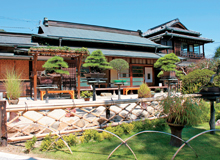
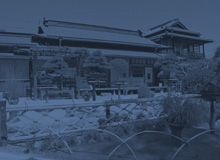
Take in a scenic overlook of valuable building and a traditional Japanese landscape garden:
You can enjoy comfortable and authentic Japanese landscape garden, which has many sights to see―many lions such as 'Karesansui', traditional Chinese or Japanese dry landscape garden, a garden next to a (ceremonial) teahouse, a varicolored or golden carp, 'Bonsai' (dwarfed tree in a pot), and seasonal various flowers. Inside of the building is open for free visiting, taking a rest, spend a relaxed and heartwarming time.
Contact:
Phone: 042-663-3611
Open: 9:00-17:30 (in September and October, it'll be till 16:30、in November to March, it'll be till 15:30)
Close: no holidays
Fee: for free
Place: 268-1 Uratakaomachi, Hachioji, Tokyo, 193-0841
How to get there: 15 minutes' walk from the Takao Station of JR/Leio Lines
Parking lots: 8 capacities
Play
-
Keio Takaosan Onsen Gokurakuyu

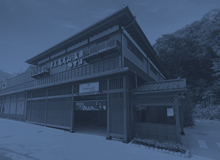
These natural hot springs are located just across from Keio Takaosanguchi Station. Visitors can soothe their tired bodies after a hike in the mountain and enjoy the blissful pleasure of services to help you relax. The facilities also include restaurants, so stay and relax both body and mind.
phone: 042-663-4126
Open: 8:00–22:30(Last entry 21:45)
Close: Open year round
# May close temporarily for facility inspections or other reasons.
Admission: Adult (13 years old and up): 1000 yen, Child (4 to 12 years old): 500 yen
Coupon Ticket: 10 tickets 8,000 yen
# Children under three years old enter free.
Address: 2229-7 Takao
Access: Adjacent to Takaosanguchi Station on the Keiō Line
Parking Lot: Approx. 110
Eat
SHOW MORELITERARY CALENDAR
1

New Year's Exhibition of the fire-fighters (Dezomeshiki in Japanese)
Dezomeshiki is a fire fighting training undertaken by fire department and fire fighter personnel of Hachioji City, which is generally conducted in the early part of January as the first training for the year, such as water discharging all at once from a fire pump.
| On New Year's Day (the 1st) | Welcoming Year's First Sunrise in Mt.Takao (at the top of Mt. Takao) |
|---|---|
| Early July | First Konpira of the Year (at Koyasu-jinja Shrine) |
| on the 1st - 10th of July | Touring of Seven Fortune Gods (Eight Fortune Gods)(Hachioji Temple and others) |
| Mid July - Late March | Takaosan Fuyu (Winter) Soba Campaign' (Mt. Takao Winter Soba Festival) (around the summit of Mt. Takao) |
| Mid July | Dondo Fire Festival (Yuuyake Koyake Fureai Village) |
2
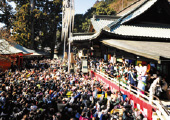
Bean-Throwing Ceremony ( Head Temple Takao-san Yakuo-in and other shrines in the city)
Setsubun ceremony is held to cast out bad fortune and to invite good fortune to bring into the home. It is said that if you eat the beans as many as the same number as your age, you will be free from illness and misfortune for that coming year, which is held with the company of sumo wrestlers, and entertainment personalities who have been prominent the previous year.
| Day of Hatsu-uma (Hatsu-uma refers to the first day of the horse in February) | Hatsu-uma (at each Inari Shrine in the city) |
|---|
3

Takaosan Fire-walking Monks (in the open area in front of the Kito-den Hall at the foot of Mount Takao)
This 'Fire Walking' is one of Japan's foremost. Holy men walk barefoot over the hot coals, praying for protection against sickness and calamity and for safety. The flames are considered to purify people by burning all defilements away. The public can also participate in.
| Mid March | Takao Baigo Japanese Plum Festival (at each Takao Baigo Japanese Plum-grove) |
|---|---|
| Mid March | Hachioji (Tokyo) All-Kanto Yume Kaido Ekiden |
4
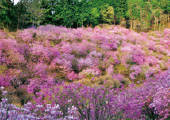
Spring Scenery of Imakuma-jinjya Shrine
1500 of Rhododendron dilatatum flowers are to bloom around mid-April alike surrounding the shrine.
| on the 1st day | Takibiraki (Yakuoin Temple, in Mt. Takao) |
|---|---|
| Early April | T108 lanterns (Mitake-jinja Shrine) |
| Early April | Cherry Blossoms Festival at Ruins of Takiyama Castle (Tokyo Metropolitan Takiyama Park: Ruins of a castle overlooking the Tama River) |
| Early April - Late May5 | Mt. Takao Young Leaves Festival (Mt. Takao piedmont and within the mountain) |
| Early April - Late May5 | Mt. Takao and Mt. Jinba Stamp Hike (from Mt. Takao to Mt. Jinba) |
| Mid April | Flower Festival (Yuuyake Koyake Fureai Village) |
| Mid April | JA Hachioji Spring Plants Fair (at open spaces within Fujimorikouen Park) |
| Late April | Verdant City with Flowers Planning Fair (Nishi-hoshasen You Road and others) |
| Late April - Early May | Yugi Flower Festival (Minamiosawa Nakago Park and around the Minamiosawa Station) |
5

Nagafusa Fureai Boys' Festival (Minamiasakawa)
About 1000 of carp streamers swim in the blue sky in a row beside the Minami-Asa-kawa River.
| Early May | Fresh Verdure Festival (Yuuyake Koyake Fureai Village ) |
|---|---|
| Mid May | Art Mucho in Hachioji (Nishi-hoshasen You Road) |
| Mid May | Hachioji Area Collaborating University Festival☆Students' Paradise (lectures free)☆(Nishi-hoshasen You Road) |
| Mid May - Late May | BIGWEST HACHISTA Festival (Hachioji City College Community Center and others) |
6
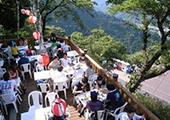
Takaosan (Mt. Takao) Beer Mount (Mt. Takao Observation Deck)
Takaosan (Mt. Takao) Beer Mount is popular with beer drinkers and couples as well as a favorite with families.
| Early June | Hachioji Environmental Festival (North Entrance of the Hachioji Station/Hachioji Mulberry Bridge/Nishi-hoshasen You Road) |
|---|---|
| Mid June | Evening of Firefly (Yuuyake Koyake Fureai Village ) |
7

Hachioji Fireworks Display (Hachioji City Citizen's Gymnasium)
About 3500 fireworks will light up the summer night sky in Hachioji at Hachioji City Citizen's Gymnasium.
| Early July | Scenetic Market in Summer 'Moring Glory Market' (Nishi-hoshasen You Road) |
|---|---|
| Early July | Hohzuki (Chinese lantern plant) Festival (Shinsho-in Temple) |
| on July 31st and August 1st | Dango Festival (Fujimorikouen Park and Asamajinjya Shrine) |
8

Shishi-mai Dance (lion dance) of Imakuma-jinjya Shrine (at Imakuma-jinjya Shrine)
This is Intangible Folk Cultural Property (designated by Hachioji City)
The lion dance is dedicated in pray for Gokokuhojo (bumper crop), devil Exorcism, and sound health.
| Early August | Tanabata Matsuri Festival (Star Vega Festival )(Yuuyake Koyake Fureai Village ) |
|---|---|
| Early August | Hachioji Festival (Kosyu-Kaido Road and Nishi-hoshasen You Road) |
| on August 26th and 27th | Steamed Manju (Japanese cake) Festival (at Suwajinjya Shrine) |
9
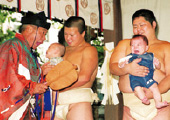
Naki-Sumo (The Baby Crying) Competition (Koyasu-jinja Shrine)
This competition is a very unique one, when parents give their babies to young students of sumo. Then, two sumo wrestlers compete to see which one will make their baby cry first. The first baby who cries is to win. It's all done in the name of good health for the children and the family.
| The first Friday and Saturday | Ginger Fest (Eifuku Inarijinjya Shrine Hachioji City) |
|---|---|
| Early September | Let's dance! Summer festival in Nishi-Hachioji (at the North entrance of the Nishi-Hachioji Station) |
| September - October (Scheduled) | Big China Market (Nishi-hoshasen You Road) |
10

Hachioji Messe 「Street Market (Kosyu-kaido Road Market)」(Nishi-hoshasen You Road)
| Early - Mid October | Scarecrow Festival (Yuuyake Koyake Fureai Village) |
|---|---|
| Early October - Late November | Mt. Takao and Mt. Jinba Stamp Hiking (between Mt. Takao and Mt. Jinba) |
| Mid October | JA Hachioji Autumn Plants Fair (at open spaces within Fujimorikouen Park) |
| Mid October | Moto-Hachioji Hōjō Ukiteru Festival (in Motohachioujimachi) |
| Mid October | Hachioji Ojuya (an important Buddhist rite of the Pure Land Sect) (at Daizen-ji Temple) |
11
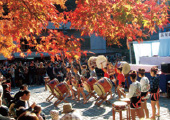
Mt. Takao Autumnal Leaves Festival (Mt. Takao piedmont and within the mountain)
Entire Mt. Takao is colored with autumn leaves. The number of the tourists/visitors hits a peak durng this autumn color season.
| Early November | Chrysanthemum flower exhibition (Yuuyake Koyake Fureai Village) |
|---|---|
| Early November | Art Mucho in Hachioji (Nishi-hoshasen You Road) |
| Early November | Yuuyake Koyake Fureai Village Festival (Yuuyake Koyake Fureai Village) |
| held at Otori Shrine on each Day of the Bird in November | Tori no Ichi open-air Market (Bird Day Fair) (held at Otori Shrine on each Day of the Bird in November) |
| On the second Saturday and Sunday of October | JA Hachioji Agriculture Festival (at Fujimorikouen Park) |
| on Saturday and Sunday around the 20th of October | Hachioji Gingko Festival (Kosyu Kaido Road) |
| Late October - Late December | Christmas Illumination (Yuuyake Koyake Fureai Village, in front of the Minamino Station and Hachioji Station) |
12
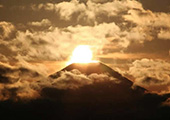
Diamond_Mt. Fuji (far from the top of Mt.Takao)
When this phenomena happens, the sun seems to be a beautiful diamond-shaped on the top of Mt. Fuji. That's why this scenery is called 'Diamond-Mt. Fuji.'
We can see this scenery everywhere and everywhen, however, the range that it's possible is the western side within 35 degrees of north or south latitude (Sunrise Diamond), and the eastern side within 35 degrees of north or south latitude (Sunset Diamond), plus good weather conditions. When all these conditions are set, only twice a year 'Diamond-Mt. Fuji' shows up for us. Thus, this is what we can seldom come across.
| on December 31st - January 3rd | Daruma-Ichi festival (Tenkaizan-Unryuji Temple, Hachioji City) |
|---|
Intangible Cultural Properties of Japan
-
Workmen's Chant While Pulling a Heavy Load (Kiyari)

-
The Lion Head Dance of Yotsuya (Dragon Head Dance, ryuuzu mai)
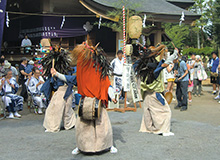
-
Hazama Town's Lion Head Dance

-
Umetsubomachi Sasara (Bamboo Whisk) Lion Head Dance
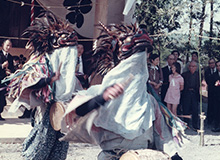
-
Otsu Lion Head Dance
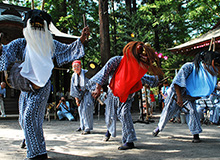
-
Yamairi Lion Head Dance

-
Imakumajinjya Shrine Lion Head Dance
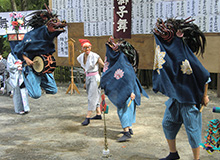
-
Tamorijinjya Shrine Lion Head Dance
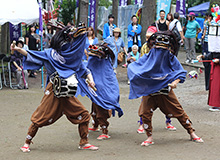
-
Hikawajinjya Shrine Lion Head Dance
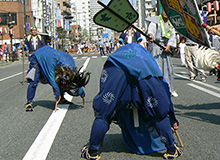
-
Ishikawa Town Lion Head Dance:
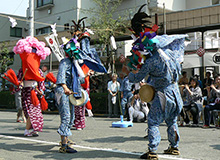
-
Hachioji Kuruma Ningyo (a late Edo period off-shoot of the traditional Japanese puppetry of Bunraku, a form of puppet theatre created by the first Koryu Nishikawa around the end of the Edo period (late 19th century)).
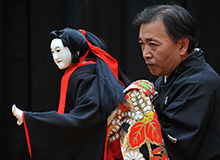
-
'Sekkyo Joruri' (a Japanese narrative of a Buddhist scripture, called “Joruri” ballad drama):




